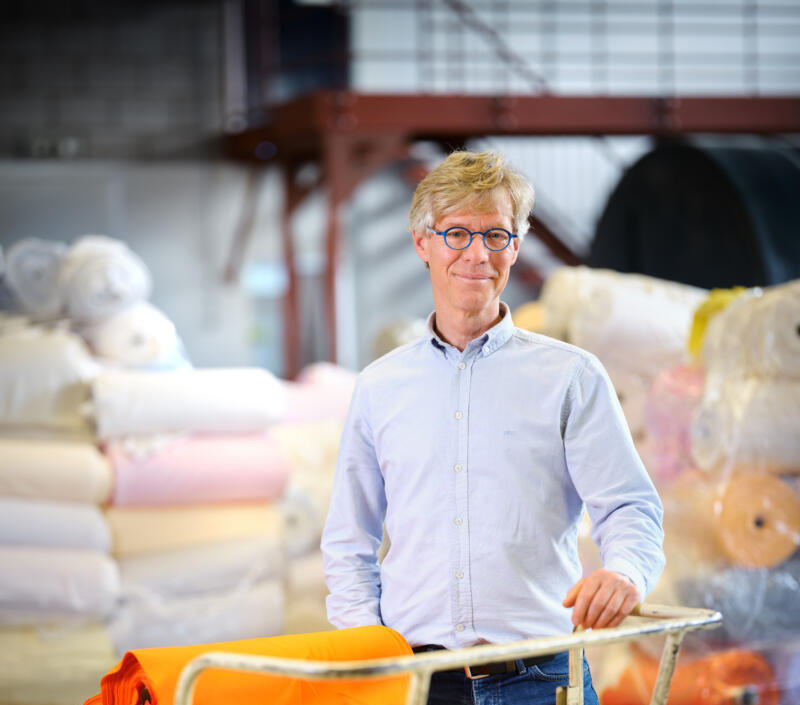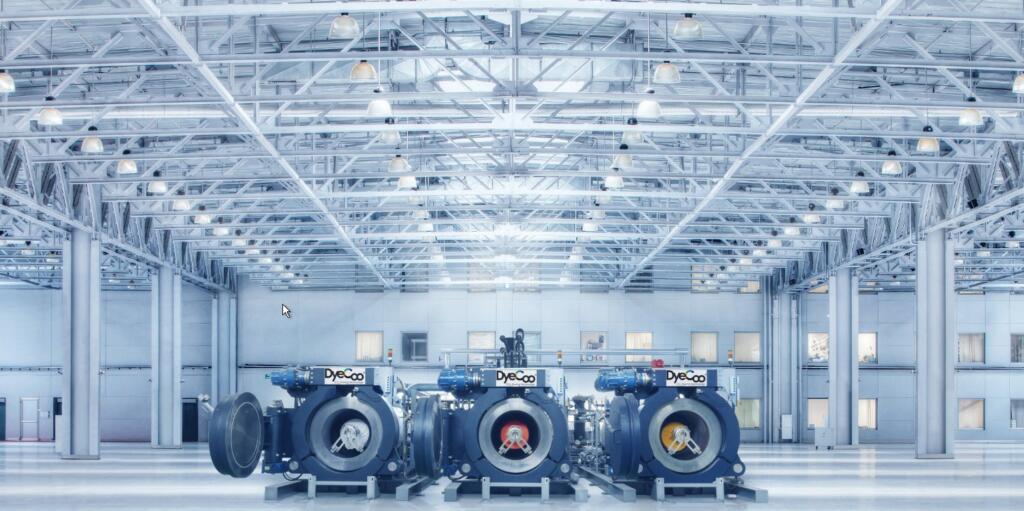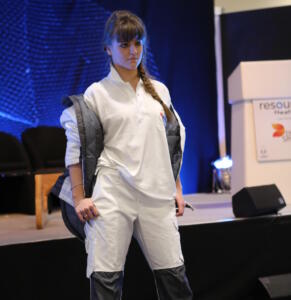The story of DyeCoo Textile Systems, water and chemical free dyeing
The expansion of Dutch circular economy knowledge and knowhow wouldn’t be possible without the drive and hard work of people. On this page we capture the personal stories of entrepreneurs that went global and asked them a number of questions:
- What is it that drove them to cross the border?
- What makes it fun, interesting and worth the effort?
- How did they manage to take the step across the border?
- What was the toughest part of going international?
- What is their biggest accomplishment since expanding your business abroad?
- What would they recommend other entrepreneurs?
- What are their next steps?

Ernst Siewers, CTO about DyeCoo Textile Systems
For this edition we spoke to Ernst Siewers, CTO at DyeCoo.
Theme(s): Polyester Textile dyeing System using carbon Dioxide to dye fabric and yarn, in a closed loop system. By using supercritical CO2 the process eliminates water and the use of processing chemicals from the dyeing process.
Active in: HeadQuarters Netherlands, Customers in Taiwan, Vietnam and Thailand
Years of international activity: 10 years
Tell us about DyeCoo Textile Systems!
By 2025, the textile and garment industry is expected to grow by 25% to 30%. The demands for sustainable offering by brand, retailers for consumers and governments will increase significantly. The demand will shift from default use of sustainable base materials (like Recycled polyester) towards sustainable textile processing. For the textile supply-chain it will become increasingly important to offer sustainable production methods upon new technologies and processes that reduce water consumption, energy usage and greenhouse gas footprint.
CO2 is a great vehicle for applying dyes to fabrics and yarns, especially hydrophobic synthetic materials like polyester. The dye process is based on pure dyestuff, super critical CO2 and fabric. Due to the high solvent power of super critical CO2, there is no need for additional chemicals to make the dyes dissolve or stick. This implies that the chemicals required for dyeing, decrease significantly.
With DyeCoo and their machines, brands and manufacturers have the opportunity to decrease water depletions and chemical usage significantly (roughly 50 million liters of water and 250 kgs of chemicals per 1000 ton of production, scientifically proven and supported with 3rd party verified LCA data).
After 8 years of continuous R&D, the CO2 production process is robust and in use to scale production.
What is it that drove you to cross the border?
The textile supply-chain is mainly based in Asia. Societal pressure, governmental legislation, industry leaders and global brands/retailers push the demand for sustainability in terms of water reduction, chemical use and energy. This gives DyeCoo a natural focus on Asia through partnerships with brands/retailers, producers and dyestuff suppliers. DyeCoo has a strategic focus on Taiwan, Vietnam, Thailand, India, Bangladesh, South Korea and Sri-Lanka.
In our market development, DyeCoo makes active use of trade missions, the Economic Departments of Science and Technology, networks in embassies and consulates. The use of (local) subsidies, funding and grant schemes help to lower the investment risk in innovative technology.
The Dutch Good Growth Fund successfully supported one of our projects in Vietnam, which is currently one of our showcase factories. DyeCoo works with Fashion For Good and The Good Fashion Fund support CAPEX investment by our customers in Asia.
What makes it fun/interesting/worth the effort?
DyeCoo’s technology is radically different compared to traditional textile water based processes, there is no water, no processing chemicals and no waste water in the dyeing process. The overwhelming attention we get from the industry is a big support. To see the technology slowly being adopted by producers, brands and retailers makes it fun and motivating to keep going.
In order to scale sustainability in the textile industry, cross border collaborations are required. Working cross cultures and cross disciplines is meaningful and fun; we are all sharing the same world!
How did you manage to take the step across the border?
Our first customer that adopted the technology is based in Thailand (Yeh group). Together with the support global brands we expanded the technology further into the supply-chain towards Taiwan and later Vietnam.
With Asia being our main market, we also setup a support office in Taiwan for technical support, sales and business development.
What was the toughest part of going international and how did you overcome it?
From around the world, there is much interest in the CO2 dyeing technology. However, CO2 dyeing technology is based on a complete different technology and CAPEX level than the conventional water-based textile industry is used to. Convincing this industry on the sustainable benefits is easy. However, convincing the world that the technology is industrially proven and offers an economically viable business case is time consuming process. We are happy to now be able to show CO2 several showcases, such as in Vietnam, Taiwan or Thailand. Through close collaborations with our customers, we can demonstrate technical robustness and economic viability.
The certification of high-pressure equipment is governed by international standards. Local authorities can apply local standards on top of the international standards as a form of trade barriers. This can make importing DyeCoo’s machines into new markets challenging and the certification process longer. With the help of the embassy network we have managed to successfully pass local certification in all our new markets.
Support from local governments and embassies showcase and promote the adoption of sustainable production. Beautiful technology showcases are build in Taiwan and Vietnam by the local government and embassy.
What is your biggest accomplishment since expanding your business abroad?
Our accomplishment to date is that we are the only company in the world that has a CO2 dyeing solution which is proven to be commercially and technically viable for polyester fabrics. The technology is running commercial production at six different Asian producers for large brands and retailers. In the summer of 2019 which the support of DGGF, Cleandye our latest project in Vietnam became operational. This is the first CO2 dye house, offering only CO2 dyeing to dye their fabrics.
Annually over 12 million kg of polyester fabric can be dyed in our CO2 dyeing machines. Our goal is to expand the global CO2 dyeing capacity significantly over the coming years. We continue to work close with our current and new customers (the textile producers), the brands and retailers to develop successful business cases for CO2 dyeing.
What would you recommend other entrepreneurs that are thinking of taking their business abroad?
We recommend to understand and know the market. Together with a commercial business-case which is built on the success indicators of your business. Having strong partnerships is essential on the supply and demand side of the business case.
What are your next steps?
By 2025, the textile and garment industry is expected to grow 25% to 30%. The increased demand will be fulfilled by man-made and biobased materials, like (recycled) polyester.
The phase of moving towards recycled, sustainable raw materials and circularity is set in motion. Supply-chains are gearing up to fulfill the demands. The next wave of innovation and adoption of new technologies will be on sustainable textile processing, including textile dyeing.
Our mission is to scale the CO2 dyeing technology by working in collaboration with the supply-chain producers, brands and retailers. CO2 has a wide scope of application in dyeing both textiles (woven and knit), yarns and fiber.



